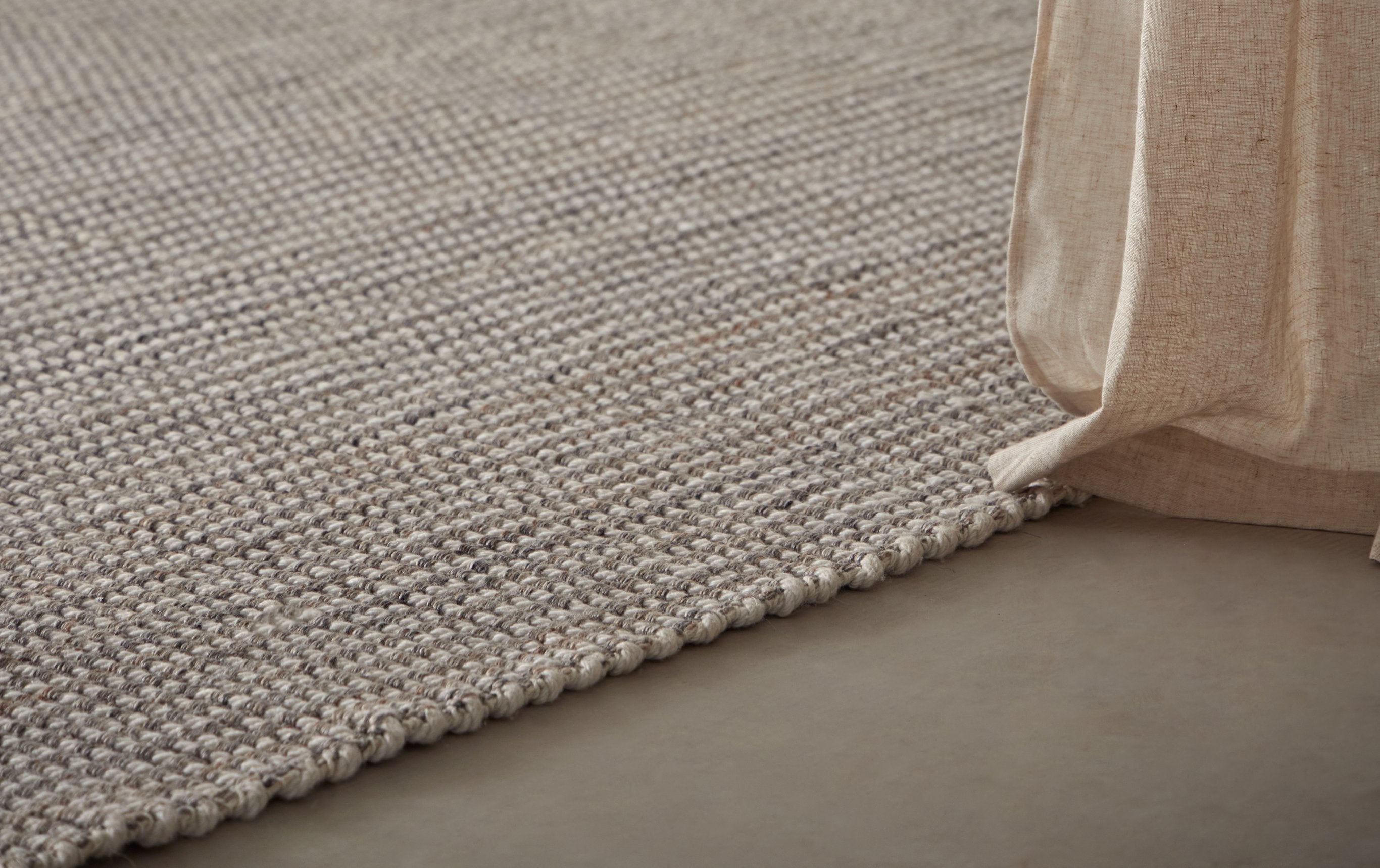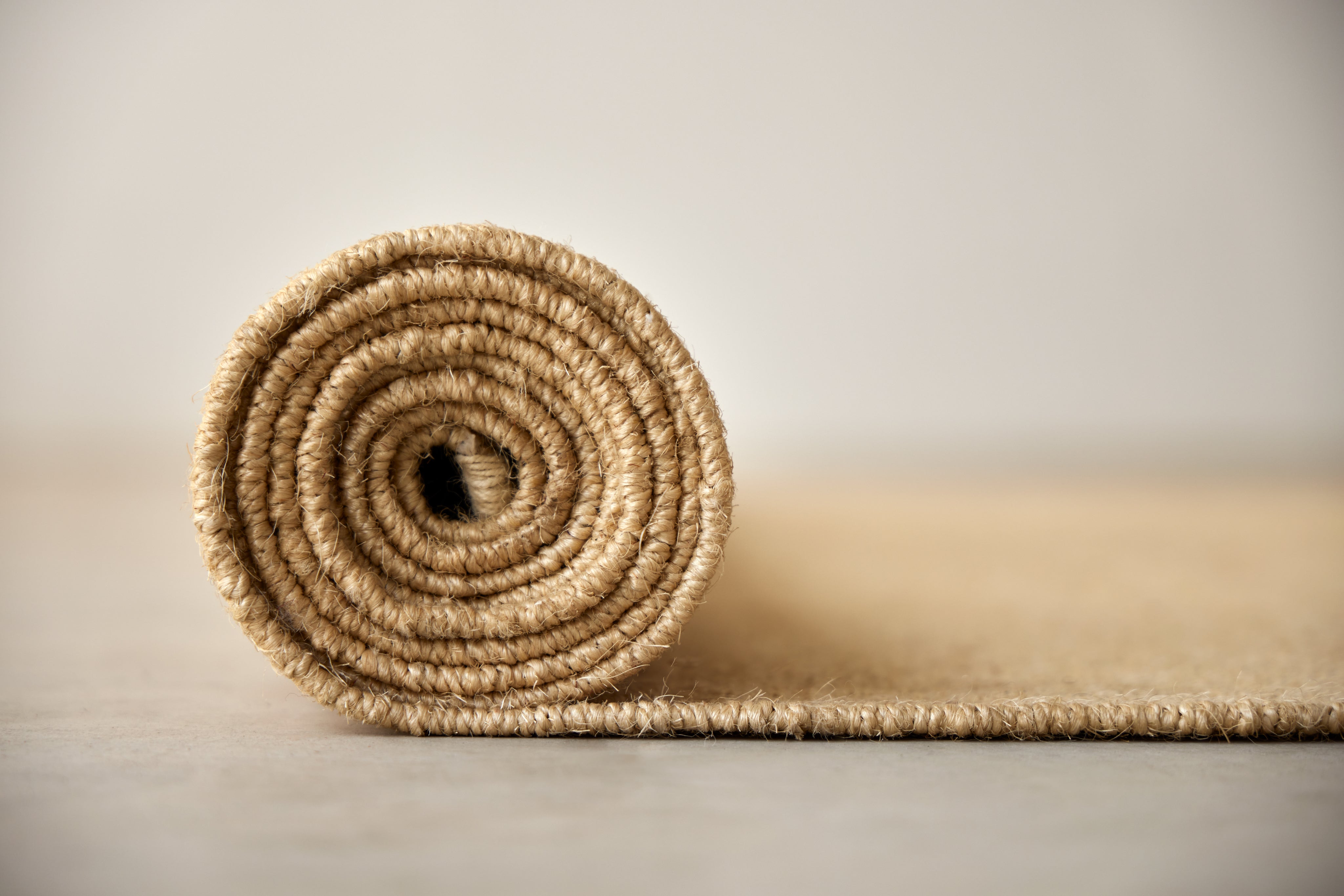Cleaning and care
Keeping your carpet in good condition not only extends its lifespan but also ensures a clean and welcoming environment. In this section, you'll find essential recommendations for daily carpet care, as well as practical guides for general cleaning, proper storage, and treating stains or specific situations.
General care
Storing the carpets
Steps to store a rug correctly:
01
Before rolling up your rug, whether handmade or manufactured, make sure it is clean and in good condition.
02
Move the furniture and place it flat on the floor.
03
Roll the rug with the pile facing inward. If it's a large rug, ask someone else to help you make it easier.
04
Use cotton string to secure it. Avoid using adhesive tape to prevent damage to the back.
05
Don't use plastic wrap or film if you're going to store the rug for a long time, as this prevents it from breathing and can encourage mold growth.
06
Make sure to store it in a dry, moisture-free place with good air circulation.
07
Store the rug upright to maintain its shape and prevent warping.
For our carpet catalog, given its high quality, we always recommend having it dry cleaned by a specialized service, such as a dry cleaner.
Pile-bumping occasionally occurs when some carpet threads stick out and are longer than the others. To fix this, use scissors and cut the threads horizontally, leveling the surface so that they are even. If done correctly, this will not damage the carpet. It's important not to pull on the threads, and when vacuuming, set the vacuum cleaner power setting to a low level to protect the carpet's texture.
Continuous exposure to direct sunlight can cause your rug's colors to fade or change. To preserve its appearance, it's advisable to keep it out of direct sunlight. If you can't avoid placing it in a sunny area, try rotating it periodically to reduce the effect of light on its color and prevent wear.
If you notice an odor when you unfold a new rug, don't worry. This is completely normal and temporary, as the fibers are tightly packed. In a few days, the smell will fade on its own.
It's normal for rugs to vary by up to 5% in size. In the case of handmade rugs, these differences are part of the artisanal process, giving them a unique and special touch.
Fiber shedding is completely natural and occurs as part of the manufacturing process, as small excess threads are shed during production. With time and proper care, this shedding will decrease. Hoover recommends using a traditional vacuum cleaner with an integrated brush head, always moving in the direction of the pile. If you have a machine-washable synthetic rug, you'll notice that the fiber shedding will disappear after the first wash.
If you notice some creases when you take your rug out of the package, don't worry; this is normal due to packaging and shipping, not a defect. To remove creases, turn the rug over, roll it tightly for a few hours, and then spread it out flat. In a few days, it will flatten completely on the floor.
Frequent use and sun exposure can cause uneven wear and color loss. To keep your rug in good condition, it's recommended to rotate it every six months to a year, which will help preserve its color and keep it looking fresh.

Carpet cleaning
Whether you have a jute or wool rug, consistent maintenance is key. The most effective way to keep it clean is through a regular care routine, which includes vacuuming frequently and addressing spills immediately. This approach will maximize cleaning results and help your rug maintain its clean, new appearance for a long time.

Jute
If a stain occurs, immediately apply absorbent white paper to absorb as much as possible. Do not rub, but blot with gentle pressure, moving inward to avoid spreading the stain.
Do not clean stains with water , as this could damage the carpet.
If the stain persists: Go to a specialized dry cleaner for dry cleaning.
